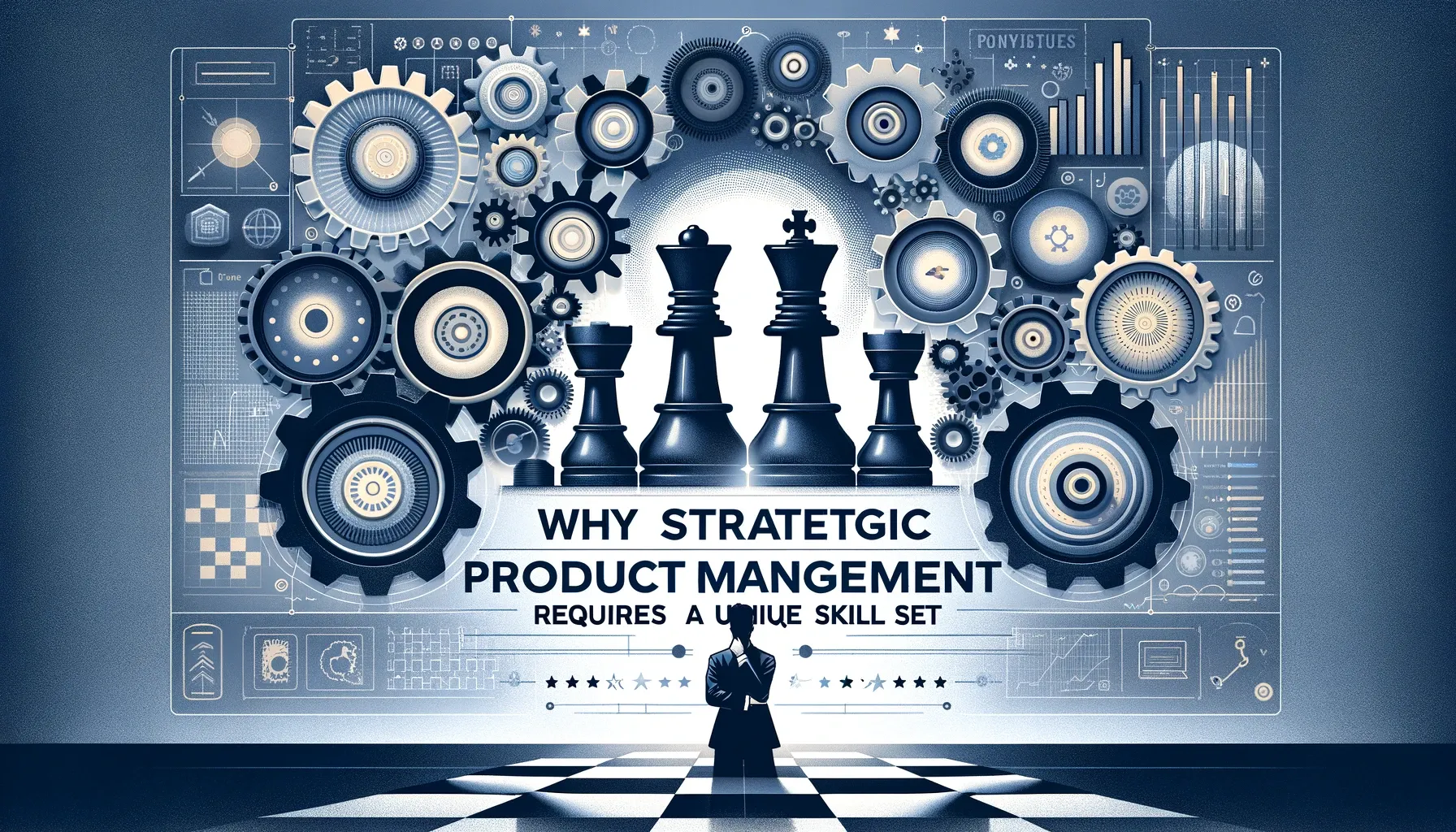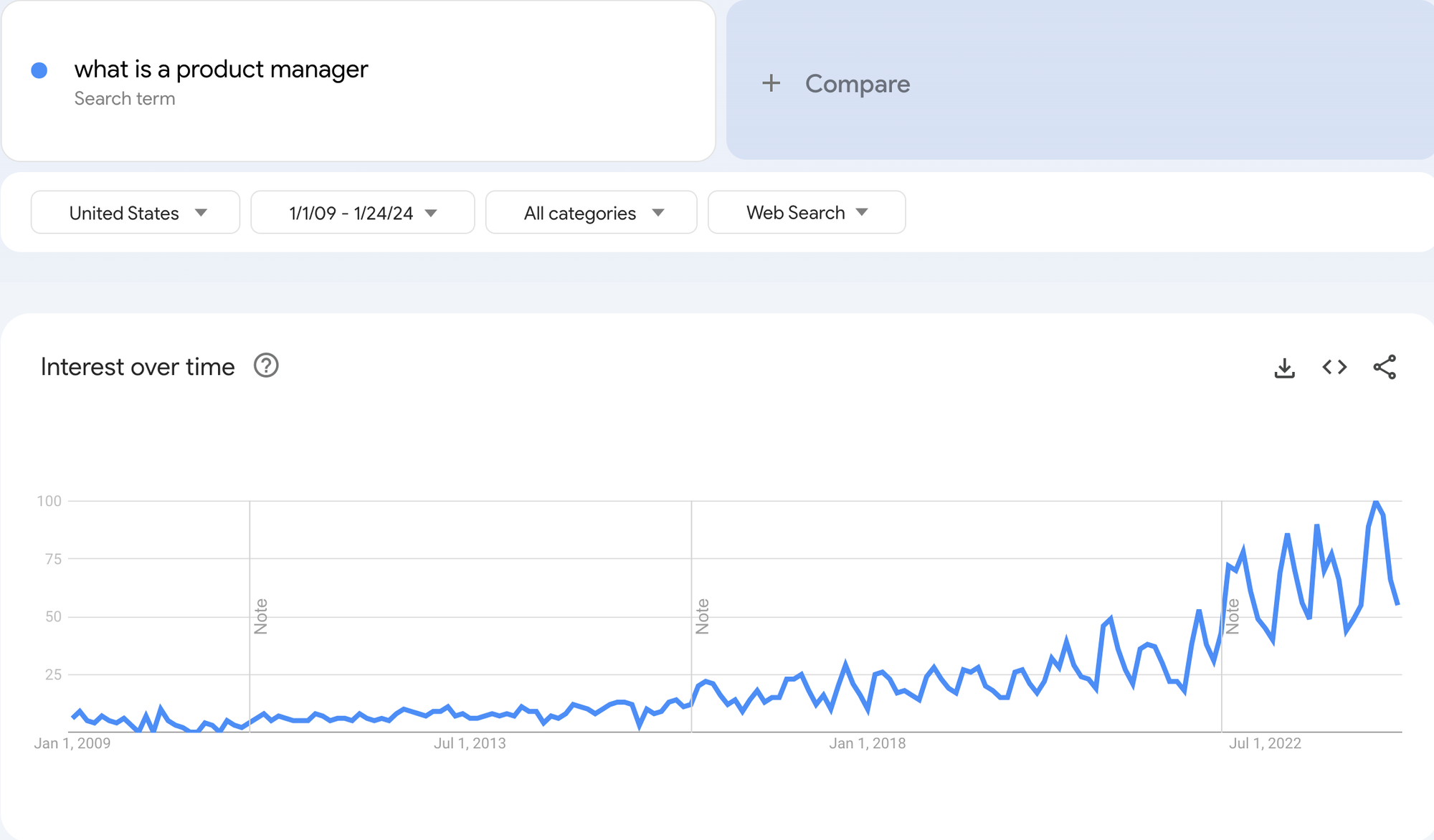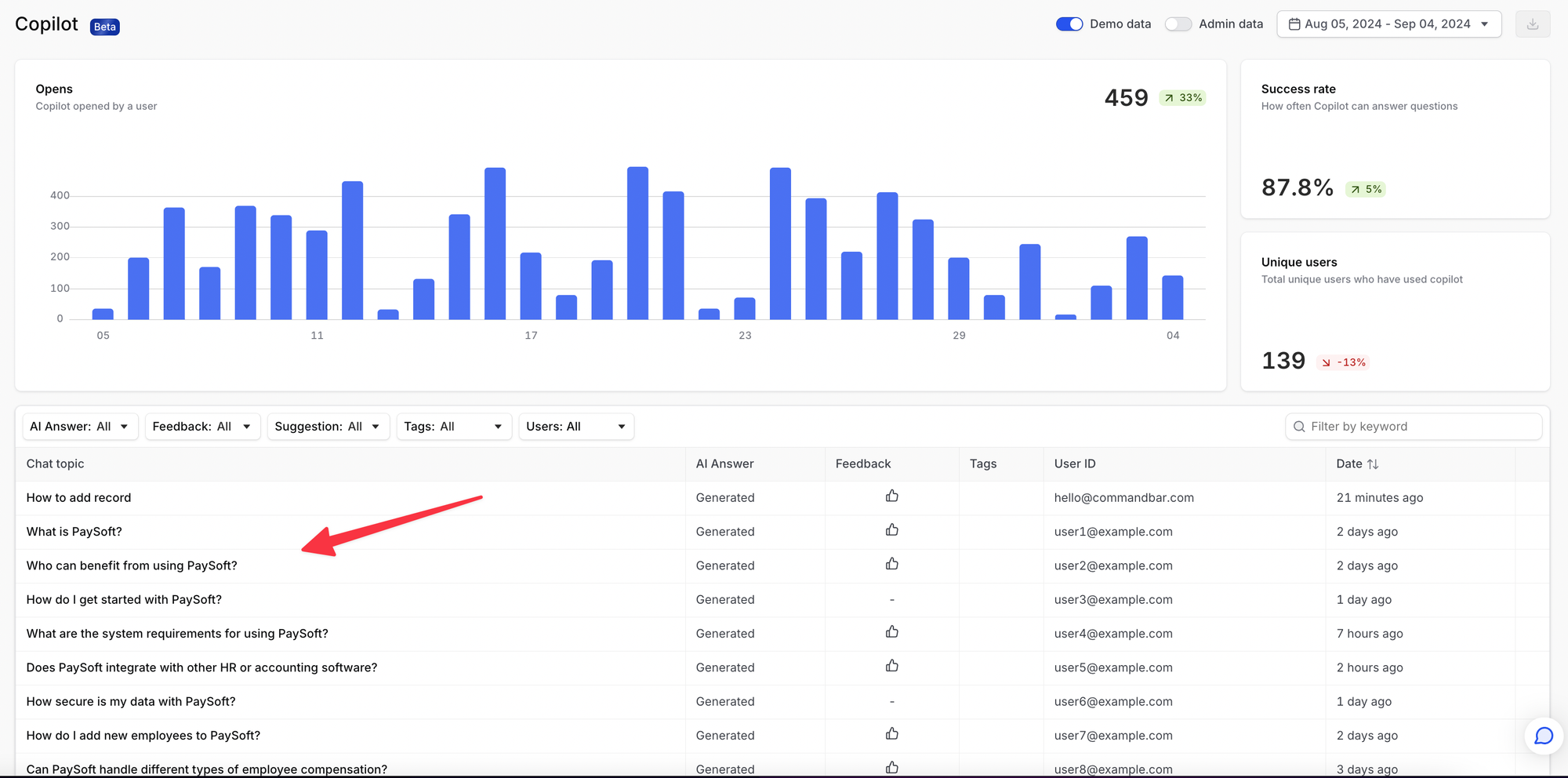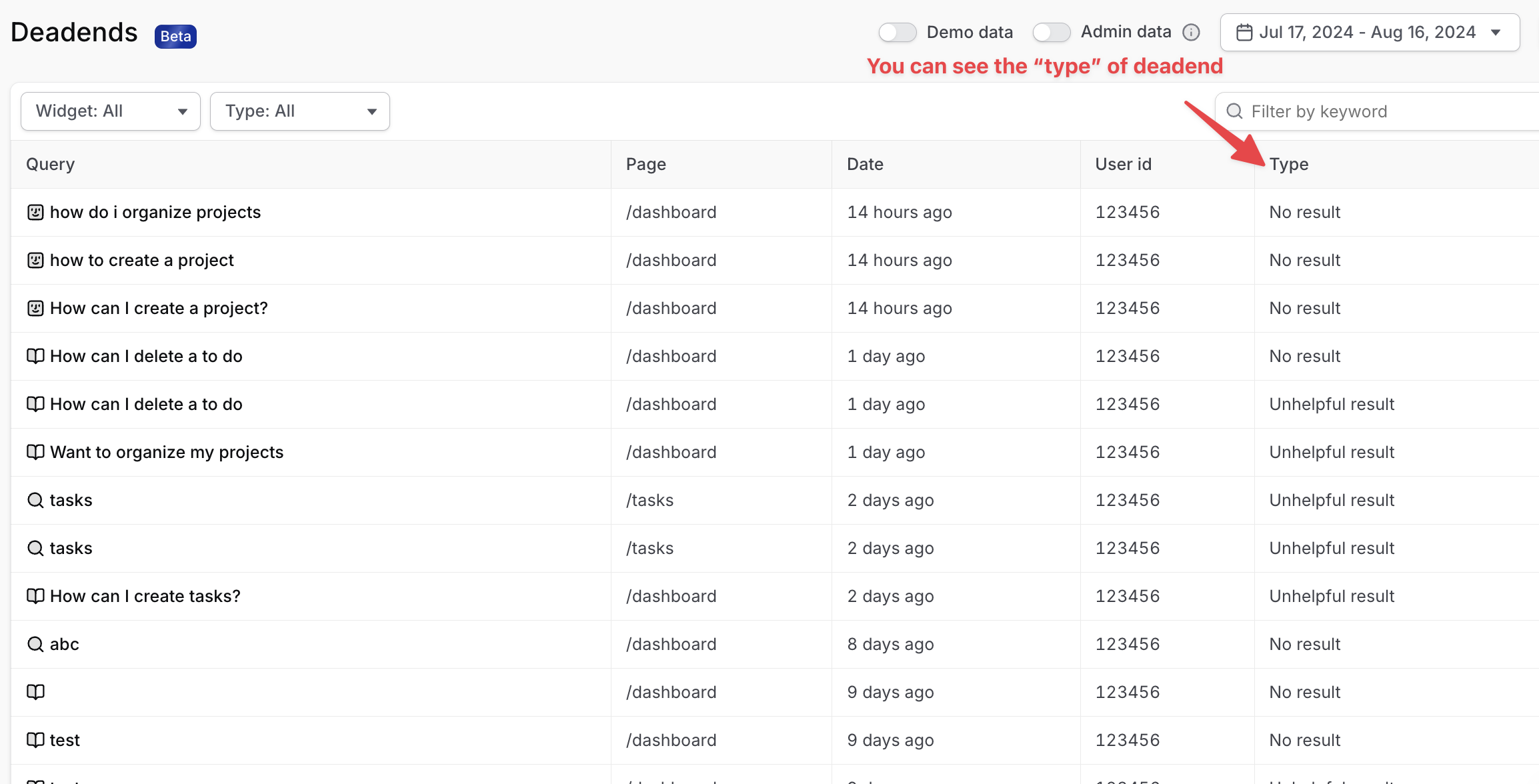Why strategic product management requires a unique skill set

The hardest part of the product management job is that it's so abstract. Most jobs have a clear description of what you'll do. Work in sales and you'll be in calls and prepare docs. Work in engineering and you'll be writing code. Work as a product manager and you'll... do everything and nothing I guess?
For those outside the technology industry, a product manager can be a confusing title, invoking everything from curiosity to complaint to dismissal (PMs don’t even do anything real, they’re just like consultants!)
It’s no surprise that more and more folks are trying to understand the role of a PM.

Now, if you're reading this article, it's likely you're a product leader or that you work with the product organization at your company. You understand what a PM is, but you also know that product management looks different across the industry.
This is because almost any “product” role inherently straddles many different parts of the business, from engineering and technology to leadership to growth and marketing.
Now, that's not to say there aren't clear and common functions and responsibilities for PMs, but rather that there's more variety than you would find in many other tech roles.
That's not a bad thing, not at all! In fact, this is one of the benefits of working in product!
One of the fundamental differences that different PM roles can have is their focus on either strategic or tactical product management.
While both are important, and most folks have to balance a bit of both, it is strategic product management responsibilities that tend to allow PMs to enter more senior roles.
Strategic vs. tactical product management
Strategic product management is key to successful digital product development and adoption, distinguishing itself from tactical product management by focusing on a long-term vision. This discipline goes beyond day-to-day product oversight and requires market foresight, deep user understanding, and an ability to craft and adapt a coherent long-term strategy.
The distinction between strategic and tactical product management is marked by differences in both scope and depth.
| Criteria | Strategic Product Management | Tactical Product Management |
|---|---|---|
| Time Focus | Longer-term outlook, focusing on future trends and directions. | Concentrated on immediate tasks and short-term objectives. |
| Decision Making | High-level decisions shaping product direction and policy. | Operational decisions managing daily tasks and activities. |
| Market Orientation | Broad market understanding, identifying future opportunities. | Focused on current market demands and immediate feedback. |
| User Interaction | Concerned with long-term user engagement and retention. | Directly handles immediate user issues and feedback. |
| Risk Management | Manages risks by anticipating market and technological shifts. | Deals with immediate risks and problem-solving. |
| Tools and Analytics | Utilizes predictive analytics and strategic planning tools. | Employs operational tools for task management and reporting. |
| Goal Orientation | Aligned with the company's long-term vision and objectives. | Targets achieving specific, short-term deliverables. |
| Stakeholder Management | Executive, board level, team level. Focused on alignment and agreement on vision and plan. | Team level, freelancer, agency. Focused on execution and output. |
While tactical management deals with the immediate execution of tasks and short-term problem-solving, strategic management is akin to an architect planning a city, where each decision impacts its future growth and sustainability.
Strategic product managers need to cultivate a blend of market awareness, foresight, and creativity. They are the ones who not only adapt to changes but also anticipate and shape them. This proactive stance is often supported by sophisticated digital tools that offer real-time data and user engagement metrics, enabling managers to make informed decisions that align with both current trends and future projections.
Now let's quickly pause: I'm not saying that strategic product management is better, harder, or more valued than more traditional and tactically focused PM work! In fact, there's an argument to be made that the core tactical product management role is still more popular and more needed than ever!
However, it is true that the more senior you go in the product org, the more likely you need some of these strategic skill sets to continue to advance and thrive.
Strategic product management is about crafting the future of products with a keen eye on evolving market dynamics and user preferences. It's a role that requires balancing analytical rigor with creative thinking. That takes a unique set of skills which we will dive into now.
So, what does a strategic product manager actually do?
So it is clear that being a strategic product manager requires both a core product skill set as well as an ability to build and execute on a longer-term vision. But how does that actually manifest in the day-to-day work of a strategic product manager?
It's best to answer this question by grouping the core activities of a strategic product manager into three buckets: strategy, execution, and people.
Strategy
At the risk of stating the obvious, a strategic product manager (SPM) does … a lot of strategy stuff!
At its core, the SPM role is responsible for setting and executing a strategic product vision.
What does this mean at a nuts and bolts level?
Let's walk through some of the core competencies needed using an example:
You're a strategic product manager for a task management product. Your core product revolves around task organization, to do lists, and enhancing users productivity and focus. You've been tasked with building a strategy for a new AI-powered (surprise, surprise 😜) collaboration feature that helps users and teams stay connected and close the loop on projects more quickly.
Where do you start?
Market Research
This is foundational in shaping the product's strategic direction. Understanding the market, competitors, and consumer needs is crucial for making informed strategic decisions. You would want to spend a big chunk of time upfront exploring the market and competitive landscape.
You’d research:
- What exists on the market today for AI collaboration in the task management space?
- What features are popular?
- What would parity look like?
- Who seems to be a leader in the space?
- Which of our competitors seem to be lagging behind?
- What are the trends in the space?
- Is this a feature set that we see investment in?
- Can we find documented data on usage or reception for this kind of feature?
- What's the price point and pricing model for this kind of feature in the market?
This is a great place to start, but looking at market trends alone will not give you a full picture of how the features are actually being used. For that, you need to talk to consumers in your space.
User Research
User research is always important in product development. It's especially key for strategic PMs to lean on because you're not just upgrading an existing feature set, or rolling out a small new feature — you are building out a long-term vision that will deeply influence your future user experience. Plus, it needs to connect with and fulfill your core company goals for the future, and also fit within the market.
Because of this, it's imperative that you talk to consumers in your space.
You’d want to ask:
- Is this feature something that you're interested in?
- If yes, why?
- If not, why?
- Are there other features you'd rather see?
- If yes, how would you stack rank this proposed feature versus those ones?
- Is this something that would make your life easier?
- Is this something that you would pay extra for?
- How would you use this product in your daily workflow?
Outside of user interviews, it can also be helpful to run painted door tests early on to gauge potential interest through CTR and qualitative feedback.
This is easy to do in Command AI – watch me do it in a minute here!
Another great way to gather clear feedback with nudges served at the right time and in context is to run microsurveys.
This is where you have an unintrusive and simple survey that is properly targeted and segmented so that it's only shown to the right users at the right time.

This means that your users are more likely to respond, you avoid non-response bias, and you get more accurate data that you can use in your product decision-making.
Product Vision and Differentiation
After you've analyzed the market and talked to potential users, you need to begin to think about how your company's product will fit into that landscape. More specifically, you must create a clear and compelling product vision that captures your motivation for launch and how the product will be differentiated.
If you're building something simply to pursue feature parity with a competitor, you're likely to be disappointed, particularly if this is a larger strategic bet. Now there's nothing wrong with going for feature parity. Still, unless that's a large strategic response to a gap causing you to lose business and face existential headwinds, it likely lies more in the realm of tactical product management.
However, if you're at this stage with positive feedback from users and your market research, it's likely there is a clear motivation and need for your product
Developing a clear, long-term vision for the product and identifying unique selling propositions are central to strategic planning. This sets the direction for the product and differentiates it in the market.
You’ll want to consider:
- What will make our product different and better than those of our competitors?
- Why will users value this product?
- How will we build this product?
- Who will be responsible for different parts of the development process?
- How will we market and sell this product?
- What does success look like for this product?
- What are the core metrics and feedback we will measure?
- What kind of user base might we expect for this product?
- What kind of revenue or business outcomes do we aim forward this product?
- Does this pass the sniff test … does this really make sense to build?
Product Positioning
The final key to building an effective strategy is to understand how you will position the product. Effectively positioning the product in the market aligns with your company’s broader strategic goals and ensures the product resonates with the target audience. You want to combine the market news and research you've done with your core business objectives and proprietary understanding of your user base.
It doesn't matter if you build the most powerful and differentiated product if you don't have a good plan to position it against alternatives and market and sell it correctly!
Planning & Execution
Even the best strategy doesn't really matter if you can't execute it. A key responsibility of a strategic product manager is to turn all of the research and market analysis into a clear roadmap and then to execute on it excellently. Within this bucket are 3 main items an SPM needs to execute on: objectives, a roadmap, and goals.
Let's use an example of a big road trip you're planning for this section:
Objectives
Setting objectives is like drawing a map for a road trip. You need to know where you're headed, right? So, these objectives are not just any random points on the map. They align with what the business overall wants to achieve. It's like making sure your road trip aligns with your vacation days.
And, how do you know you've reached your destination? That's where measuring success comes in. We're talking user adoption rates, revenue targets, customer sign-ups — stuff like that. It's like having a GPS that tells you, "Hey, you've arrived!"
Pro tip: you'll want to have clear success objectives in metrics. What does this mean? Coordinate ahead of time with different stakeholders to ensure that the numbers, data points, and feedback loops you'll be analyzing are clearly set up and collected properly, and that benchmarks for success, failure, and everything in between are set!
Roadmaps
Creating a roadmap is like planning the stops on your journey. You lay out when you're going to roll out new features or make big updates. But hey, road trips often have detours, right? So, the roadmap needs to be flexible. You've got to be ready to take a different route if there's a roadblock.
And communicating this roadmap? Super important. It's like keeping everyone in the car informed so they know what to expect. No “surprise” bathroom breaks or accidents desired!
Goal setting
Setting goals is like setting milestones for your trip. You've heard of SMART goals, right? Specific, Measurable, Achievable, Relevant, and Time-bound – like your travel checklist.
And here's the thing about goals – you need a mix. Imagine having short-term goals like stopping for snacks and long-term goals like reaching your final destination. They balance each other out.
Lastly, regularly checking your map and adjusting your course is key. Conditions change, new roads open up, and sometimes you find a better destination. It's all about staying flexible and on track.
Note: you don't need to use the SMART framework; you could go with OKRs or another goal structure. What matters is that you have a clear framework in place!
Don’t forget about the data
An important addendum to everything I just mentioned above is that data is essential to formulating every single step of your roadmap and goals. That also means that the tools you're relying on to collect this data need to be easy to use and accurate
These tools are not just supplementary but fundamental to understanding and shaping the product's trajectory. Strategic product managers, therefore, rely heavily on data to guide their decisions, ensuring that their strategies are not based on intuition alone but are grounded in concrete, actionable insights.
We talked about how important user feedback and input are; I'm certainly not backing away from that! But if user input is the muscle, data and analytics are the backbone for crafting effective and sustainable product strategies, transforming raw information into a roadmap for success.
You’ll want to consider how data and analytics can help you as a strategic product leader:
Forecasting and Trend Analysis
- Utilize data to predict market trends and user behavior.
- Anticipate future needs and preferences, informing product development.
Data-Driven Decision Making
- Base strategic decisions on comprehensive data analysis.
- Ensure choices align with both current metrics and future projections.
Integrating Qualitative Insights
- Blend quantitative data with user feedback for a complete understanding.
- Use customer comments and behavior to add context to numerical data.
Actionable Insights for Product Roadmap
- Translate data and user insights into actionable strategies.
- Develop product roadmaps that are informed by robust data analysis and user needs.
People are the solution … and the problem
Even though SPMs will inherently focus on strategy, people still lie at the core of a successful product. That's no surprise! But what does that mean for a SPM, and how does it differ from tactical product management?
Take ongoing feedback seriously and rely on user input
You must put your users at the heart of your strategy, or you'll never succeed. That means not only doing all of the research and analysis we talked about above, but once you launch, you must continue to bring in high-quality qualitative UX feedback to ensure you continue to innovate and adapt your strategy.
One of the best ways to get clear insight into your users' true intent is to gather natural language feedback.
As we talked about earlier, you can do that with microsurveys, but sometimes even the best and most well-structured survey doesn't get a lot of responses.
But users are always engaging with a user assistant for support and clarification.
With our Copilot in the bottom right of your product, we're not only helping you to deflect tickets and aid your customer support team, but you're also discovering a whole new trove of user intent data.
That's because you get to see all in one place all of the questions and concerns and frustrations your users have, all in their own language. Now, yo you know how they're thinking about your product and what issues they are facing clearly!

From there, you can use the dead ends dashboard to find where your users run into a wall and can't get help, which helps you not only improve documentation, but also your product overall.

Product launch is the culmination of lots of user research, testing, and feedback, but it is absolutely not the end of it!
Managing teams is still important
As heady as a Chief Strategy Officer role or VP of Product title can sound, the reality is that you'll likely still spend a lot of time managing teams day to day, and in smaller orgs even getting your hands dirty and putting out fires.
I highlighted how this might be a key difference between an SPM and a tactically focused product manager, and that’s true.
All I'm saying is that a strategy-focused PM is still going to need to work with engineering, sales, and marketing teams and potentially with external agencies and collaborators as well.
That’s a good thing? Why?
The worst-case scenario is being off in the clouds, working on the high-level strategy without understanding how your team operates, or the personality of different leaders, or how resource constrained you are.
So, while a strategic product manager might spend a relatively smaller amount of time in the weeds day-to-day managing their team actively, it's still important to keep a finger on the pulse and also do deep dives when needed.
Stakeholders are higher-level usually
Relatedly, this means that your stakeholder management skills are certainly still needed, and that's because in strategy-focused roles, you might often be reporting to leadership and/or the board if you are in the leadership team. Working closely with executives and board members requires an extra level of tact and understanding of how to effectively and clearly communicate the product strategy to folks who might be quite smart, but who lack the in-the-weeds knowledge you and your team have.
These higher-level conversations and stakeholder management activities require an understanding of personalities, company culture and politics, and maybe even a little psychology (that minor college is finally coming in handy!)
Strategic product management is cool, but it's not for everyone
Being a strategic product manager means combining your core product management skills with your ability to craft a larger, longer-term plan that aligns with core business objectives. While your day-to-day interaction with your core teams will still be important, you'll also be asked to work with higher-level stakeholders often and to take accountability for the full life cycle, from product research into road mapping into execution into continuous innovation.
Taking on a strategic product management role can be an amazing way to level up your career if you're interested in leadership. But at the end of the day, if you're a hands-on product & design person through and through, staying away from many company politics and executive responsibilities could also be a good way to go in a tactically-focused role!
